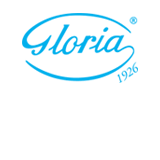Comment to: Six-year follow-up of endovenous laser ablation for great saphenous vein incompetence, by Spreafico G, Piccioli A, Bernardi E, Giraldi E, Pavei P, Borgoni R, Ferrini M, Baccaglini U. J Vasc Surg 2013;1:20-5.
Submitted: 19 June 2013
Accepted: 19 June 2013
Published: 20 December 2013
Accepted: 19 June 2013
Abstract Views: 2067
FULL TEXT: 1295
Publisher's note
All claims expressed in this article are solely those of the authors and do not necessarily represent those of their affiliated organizations, or those of the publisher, the editors and the reviewers. Any product that may be evaluated in this article or claim that may be made by its manufacturer is not guaranteed or endorsed by the publisher.
All claims expressed in this article are solely those of the authors and do not necessarily represent those of their affiliated organizations, or those of the publisher, the editors and the reviewers. Any product that may be evaluated in this article or claim that may be made by its manufacturer is not guaranteed or endorsed by the publisher.

 https://doi.org/10.4081/ByblioLab.2013.4
https://doi.org/10.4081/ByblioLab.2013.4






